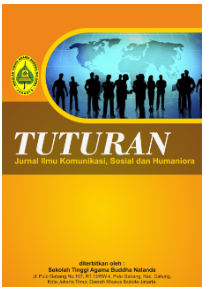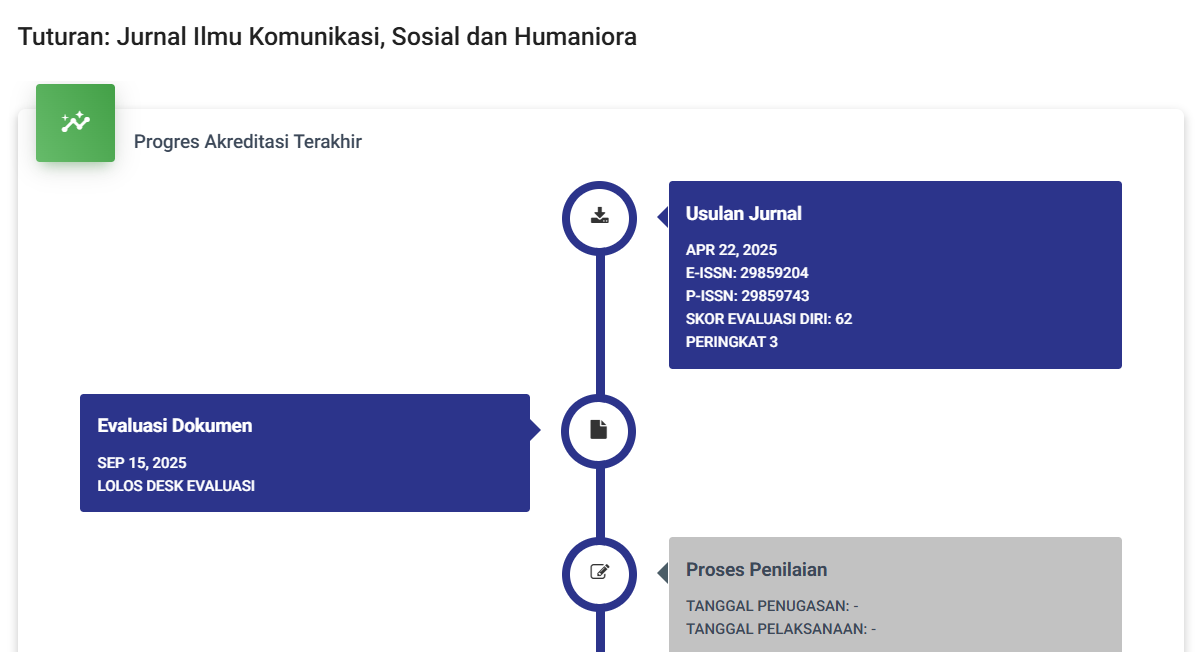Komunikasi Interpersonal dan Representasi Emosi dalam Film Avengers: Endgame (2019)
Studi Kasus Dinamika Tokoh dan Implikasi terhadap Wisata Populer
DOI:
https://doi.org/10.47861/tuturan.v3i2.1880Keywords:
Avengers, crisis, film-induced tourism, emotional impact, interpersonal communicationAbstract
This research discusses interpersonal communication and emotional representation in the film Avengers: Endgame (2019), focusing on how the dynamics between the main characters shape emotional resonance that influences the audience's tourism behavior. The background of this study departs from the phenomenon of film-induced tourism, where the emotional attachment of the audience to fictional characters and locations triggers the desire to visit the actual filming locations of the film. The aim of the research is to identify forms of interpersonal communication in films and to examine their implications for tourist interest in filming locations. With a descriptive qualitative approach and the Stimulus–Organism–Response (S–O–R) model analysis, data were collected through scene observation and media documentation. The results show that verbal and nonverbal communication in the form of expressions of loss, empathy, social support, and sacrifice build a strong emotional bond with the audience. This elicits a tangible response in the form of tourist visits to locations such as Stark Cabin and St Abbs. This research concludes that interpersonal communication in films not only strengthens the narrative but also serves as an affective bridge that shapes the image of the destination. These findings have implications for cinema-based tourism promotion strategies and the use of emotional narratives in the creative industry.
References
Ayu, D. A. A., Suharyono, & Wilopo. (2015). Peran promosi pariwisata melalui film dalam meningkatkan jumlah kunjungan wisatawan. Jurnal Administrasi Bisnis (JAB), 26(1).
Beeton, S. (2016). Film-induced tourism (2nd ed.). Buffalo: Channel View Publications.
Cohen, J. (2001). Defining identification: A theoretical look at the identification of audiences with media characters. Mass Communication and Society, 4(3), 245–264. https://doi.org/10.1207/S15327825MCS0403_01
Couldry, N. (2012). Media, society, world: Social theory and digital media practice. Cambridge Malden, MA: Polity.
Ekman, P., & Friesen, W. V. (1975). Unmasking the face: A guide to recognizing emotions from facial clues. Englewood Cliffs, NJ: Prentice-Hall.
Field, S. (2005). Screenplay: The foundations of screenwriting (Rev. ed.). New York, NY: Delta Trade Paperbacks.
Macionis, N. (2004). Understanding film-induced tourism. In W. Frost, G. Croy, & S. Beeton (Eds.), International Tourism and Media Conference Proceedings (pp. 86–97). Melbourne: Tourism Research Unit, Monash University.
Mazaya, Z., Susilawati, N., & Nisa, U. (2024). Film sebagai medium komunikasi pariwisata (storynomics tourism dalam film “Ngeri-Ngeri Sedap”). Jurnal Interaksi: Jurnal Ilmu Komunikasi, 8(2), 397–406.
Mehrabian, A., & Russell, J. A. (1974). An approach to environmental psychology. Cambridge, MA: MIT Press.
Moch. Djauhari, & Afniar, A. (2018). Medium komunikasi pariwisata melalui film animasi: (Studi kasus analisa isi film Coco). Jurnal Spektrum Komunikasi, 6(2), 59–66. https://doi.org/10.37826/spektrum.v6i2.33
Mulyadi, R. M., & Sunarti, L. (2020). Film induced tourism dan destinasi wisata di Indonesia. Metahumaniora, 9(3), 340–356. https://doi.org/10.24198/metahumaniora.v9i3.25810
Prayag, G., Hosany, S., & Odeh, K. (2013). The role of tourists’ emotional experiences and satisfaction in understanding behavioral intentions. Journal of Destination Marketing & Management, 2(2), 118–127. https://doi.org/10.1016/j.jdmm.2013.05.001
Riley, R. W., & Van Doren, C. S. (1992). Movies as tourism promotion. Tourism Management, 13(3), 267–274. https://doi.org/10.1016/0261-5177(92)90098-R
Yi, K., Li, F., Zeng, Y., Xie, C., & Xu, Z. (2022). The mediating role of empathy in the internal mechanism of film-induced tourism. Frontiers in Psychology, 13, 900998. https://doi.org/10.3389/fpsyg.2022.900998
Downloads
Published
How to Cite
Issue
Section
License
Copyright (c) 2025 TUTURAN: Jurnal Ilmu Komunikasi, Sosial dan Humaniora

This work is licensed under a Creative Commons Attribution-ShareAlike 4.0 International License.








